Page the calendar back to 2013, and the world of tech looks quite a bit different. Slack had only just launched in a select preview release. Twitter (when we could still call it that) debuted on the public markets and Google released the prototype of its highly-touted (yet ultimately ill-fated) Google Glass product. Candy Crush Saga was Apple’s most downloaded app of the year, beating out mega-popular Vine (which was also released that year) for the top slot.
And while it may not have snagged the biggest headlines that year, around here we’re partial to something else that launched back in 2013 — First Round Review. Trends come and go in the startup ecosystem, but this little experiment that we launched a decade ago proved to have staying power. Ten years on, we’ve got nearly 600 articles, millions of pageviews, and hundreds of thousands of newsletter subscribers to prove it — and we’ve even spun off The Review format to the airwaves with 100+ episodes of our In Depth podcast.
We made a few promises to our readers back in 2013 when we launched The Review, which deserves revisiting as we celebrate crossing the decade mark this month:
- We'll get out of the way and let experts speak directly to you about what they believe is most important.
- Every article will serve up tactics that you can use today to change your company and your career.
- We will never be boring. The stories you find on here are crafted to teach, to engage and to stick.
These marching orders have taken us in all sorts of different directions over the past decade. There have been fresh perspectives that get you thinking differently (like building Minimum Lovable Products instead of MVPs or rethinking the role of the PM). Now-widespread concepts like Kim Scott’s Radical Candor approach to feedback or Superhuman’s framework for product-market fit got their start on the pages of The Review, while memorable turns-of-phrases have become embedded into startup vernacular, like Molly Graham’s rallying cry to “give away your Legos,” or Dave Girouard’s charge to make speed a habit.
Along the way, we’ve searched far and wide for folks to share their wisdom — not just showcasing those who sit at the tippy-top of the org chart or at the helm of flashy name-brand companies (although there have been plenty of those folks, too).
We’ve shared longer company histories, tracing the origin stories of Looker, Upstart, or in our more recent Paths to Product-Market Fit series, Airtable, Webflow, Retool, and Vanta. But we’ve also dug deep into the tactics and the habits of leaders who powered the rise of breakout companies, from Facebook and Instagram, to Dropbox and Stripe, to Airbnb and Amazon, to Figma and Notion — while also drawing inspiration from unexpected corners, like Backcountry’s approach customer service, how Sweetgreen scales intimacy or what software developers can learn from Pixar.
And with a few exceptions here and there (remember when holacracy was all the rage?) the advice we’ve collected here still endures. First Round partner Chris Fralic’s networking advice or Looker founder Lloyd Tabb calling out vanity metrics may be many years old now, but they remain timeless.
Perhaps what The Review is known for best is our longform approach — these aren’t the type of features you can quickly scan in between meetings. But to celebrate 10 years of publishing, we thought we’d try something different. So we pulled together 100 snappy snippets of some of the very best advice we’ve shared on our digital pages over the last decade.
One quick caveat — even these 100 bite-sized bits of advice barely scratch the surface of our massive archive. We’re forever grateful to the hundreds of startup folks who trusted us to share their hard-won wisdom. We started this outlet because we were strong believers that the folks in the trenches building were eager to impart their lessons, not hoard them. All of you have proven, with each and every article we publish, that this community of builders is a generous bunch.
So cheers to the next decade of The Review — and more importantly, to the incredible entrepreneurs who will share their insights and expertise so that the next wave of builders may succeed.
ADVICE FOR GROWING AS A LEADER & BOOSTING YOUR CAREER:
1. If you personally want to grow as fast as your company, you have to give away your job every couple months. Molly Graham on scaling startups.
2. End every meeting or conversation with the feeling and optimism you’d like to have at the start of your next conversation with the person. If you envision running into this person again and how you want that to go, it’ll undoubtedly influence how you navigate a present conversation — usually for the better. Chris Fralic on how to become insanely well-connected.
3. A lot of career advice circles around the idea of “leave when you stop learning.” I think that’s directionally good advice — so long as you have an open mind about what learning looks like. For example, I’ve found that there are periods that may be low-learning on technical topics, but might be high-learning in organizational or team dynamics.” Brie Wolfson on the docs that will boost your impact.
4. Focus on what’s keeping your manager up at night. Often people are so focused on solving their own problems, they don’t think about how their proposed solutions create more problems one level up. Jan Chong on managing up.
What are your boss’s problems and how can you solve them?
5. The quality of your questions determines the quality of the feedback you receive. Instead of asking vague questions like, "Do you have any feedback for me?" or "How can I improve?" ask specific questions to unearth truly constructive feedback. How can this deliverable be 10% better? What would make you “love” this instead of just “like” it? Shivani Berry on becoming a feedback magnet.
6. Founders need to take responsibility for their own burnout and make sure it’s actively managed, like a KPI of the company — and try to do the same for their team. Steve El-Hage on first-time founder lessons.
7. When it comes to emotional health, many people wait until they’re having debilitating anxiety before they start to think seriously about taking action. Think about maintaining emotional fitness less like going to the doctor and more like going to the gym. Just because founders aren’t having daily panic attacks does not mean that they are emotionally fit. Dr. Emily Anhalt on emotional fitness.

8. Pick a company to join by treating the decision like an investor. You are going to be investing your time in this company rather than investing money as a venture capitalist might. Is your next step going to be even more amazing because you spent time here? Elliot Shmukler on his framework for choosing winners.
This is something I’ve picked up from poker: Your probability of winning a hand always depends on having multiple ways to win.
9. The hardest transition as a founder is going from working directly on the product to not. There’s this joy that comes from sitting down to solve a problem and standing up when it’s done and good. Building a company or managing people is never just done. Drew Houston on going from hacker to hypergrowth CEO of Dropbox.
10. I’d rather go down doing it the way that I feel in my heart is the right way to do it. If I got convinced to do it some other person’s way, and it didn't work out, I’d always wonder, ‘What if we’d done it my way? The key is not letting headwinds or tailwinds determine where you sail, but how you sail. To inform how you’ll tack to hit your mark. Wade Foster on Zapier's contrarian fundraising strategies.
11. There’s a happy balance somewhere between being a hermit and a party circuit favorite — and it tilts toward the hermit end of the spectrum. When you’re a founder, every moment you’re not writing code or getting users, you need to be making a conscious choice: Is whatever you’re doing worth your time? Alexis Ohanian on founder do’s and don’ts.
12. When it comes to public speaking, keep polishing your best idea, don’t continue trying to mine for brand-new gems. Think of your favorite song. Do you ever get tired of hearing that song? It’s the same with a strong talk. Anjuan Simmons on building a personal brand.
13. Often, a good impression is a byproduct of deep engagement in a conversation, a desire to learn, or thoughtful work, as opposed to something you aim at directly. Ironically, if you want to make a good impression, focus less on impressing people. Adam Grant on startup lessons from unlikely sources.
14. If I was an Olympic gymnast or an NBA basketball player, all my coach told me was, “You’re doing great!” I’d probably fire them. We want to be world-class Olympic athletes in what we do — and we need brutally honest feedback to get there. Amber Feng on navigating an engineering career path.
15. Separate what you can control from what you can’t. It’s a small way to lift some weight off your shoulders. Take 15 minutes to create a list of everything that you’re worried about. Then label each one as a ‘within’ or a ‘beyond’ to see your sources of stress and anxiety laid bare. Liz Fosslien on weathering startup storms.
16. If you treat your connections as a kind of personal ATM you use for frequent withdrawals, you’ll quickly be disappointed (and overdrawn). Karen Wickre on making connections that count.
The key to networking is to practice a little bit every day — and do it when you don’t need specific help.
17. Goals are great — as long as you have thought in advance about what would make it so that you wouldn’t pursue that goal anymore. Once we set that finish line, we grade it pass-fail. If you quit after mile 20, you failed. If you run 26.2 miles, you passed. Even though running 20 miles is better than not having tried at all. Annie Duke on whether to grit or quit.
18. Before taking your seat across from the hiring manager, prioritize around what’s most important in your new job. Every single question you ask should clearly map back to those priorities — and pack a punch. When jotting down the questions for your interview panel, focus on your deal breakers: What would make you walk away? Anna Binder on questions for candidates to ask in an interview.
19. There’s this pervasive feeling people have that says, “Once I get that funding, it will be okay.” Or “Once we hire that person, it will be okay.” But that’s just living in scarcity and nothing will ever be enough. Katia Verresen on abundant thinking.
When you take time to be grateful for what you do have going for you, you’re training your brain to shift away from stress, to not overreact, and to be open to alternative routes forward. Gratitude is the muscle that makes miracles happen.
20. The demands of a startup are dizzying. To anchor yourself, you must schedule time to write things down. Stacy La on joining as employee 1-20.
21. Focus is doing things with a clear intention. It doesn’t mean you charge single-minded toward a goal. It means you pay rapt and incremental attention to how you need to turn the rudder on a project. Fidji Simo on finding focus.
22. It’s essential to grow with the company — rather than having the company grow around you. Are you constantly looking around to find new ways that you could help the people around you? Instead of being super frustrated by how busy your manager is these days, is there something you could do to help them get more leverage? Cristina Cordova on scaling lessons from Stripe and Notion.
It’s very easy to fall into a mindset where you’re criticizing what’s not going well — it’s much harder to come up with a proposal for making things better.
23. At a big company you're trying to reduce risk, so you're trained to get it right and get it out. At a startup, you have to be a risk taker. You have to get it out, then get it right. You have to be impatient with shipping, but patient with your career. James Everingham on how to scale yourself down, not up.
24. Being vulnerable is one of the most powerful things you can do as a leader because it shows you’re genuine. Being genuine builds trust. Trust is the key to getting anything done. Don Faul on pivotal stories for startup leaders.
ADVICE FOR GROWING & MANAGING YOUR TEAM
25. It sounds so simple to say that bosses need to tell employees when they're screwing up. But it very rarely happens. Picture a basic graph divided into four quadrants. If the vertical axis is caring personally and the horizontal axis is challenging directly, you want your feedback to fall in the upper right-hand quadrant. That’s where radical candor lies. Kim Scott on delivering radically candid feedback.
26. I trust you, make the call” might be the six most powerful words you can hear from a manager. Sean Twersky on high-impact habits for managers.
27. If you’re a manager looking to deepen the conversations you’re having with your direct report, try asking this one question: “What would you save for the end of our 1:1 today? Let’s start with that.” Ximena Vengoechea on becoming a better listener.

28. Anytime you’re telling someone what to do you’re not actually solving the bug. You’re doing a really bad patch. Sidharth Kakkar on architecting an in-sync startup.
29. If you find yourself constantly interrupted by emergencies, find out why. If you’re regularly putting out fires yourself, you’re doing it wrong. Focus your time on how to enable others on your team to put out fires themselves. Sam Corcos on optimizing your time as CEO.
Your job as a CEO is to build fire departments, not put out fires.
30. People need to feel comfortable disagreeing. That doesn’t mean allowing things to flare and get crazy-tense, but also making sure it’s not super-sanitized and folks feel pressure to be kumbaya all the time. When you see the beginnings of healthy conflict, lean into it. Say, “That’s interesting, this feels productive. Let’s talk about it.” It signals that you’re intentionally fostering different ideas.” Jack Altman on running executive meetings.
31. When managers get ready to give hard feedback, they do a lot of prep work. Maybe they write a script or even go through a practice session with a friend. But think about how little work goes into giving folks praise. Russ Laraway on upping your management game.
32. Can you say with confidence that each report would want to be on your team again? If you aren’t sure that the answer is yes, it’s probably no — much like how if you have to ask, “Am I in love?” you’re probably not. Julie Zhuo on essential career questions.
33. Humans have a recency bias, meaning we tend to overweight recent experiences. In management that means I’m mostly paying attention to whoever I talked to last — as the saying goes, “The squeaky wheel gets the grease.” Not everyone is going to be a squeaky wheel. As a manager, you need to be listening for what you’re not hearing as well. Matt Wallaert on impactful questions for managers to ask themselves.
34. Part of being an adult is being able to hear the truth. And the corollary is that you owe the adults you hire the truth. That is actually what they want most from you. Patty McCord on Netflix’s radically honest culture.

35. It’s tempting to only tap your senior people to interview candidates. Less experienced people get a different signal — namely, if they think they can learn from and be led by a candidate. Marco Rogers on interviewing engineers.
36. Not localizing problem-solving is a secret killer of companies. Claire Hughes Johnson on hitting pause to grow faster.
If you don’t consistently teach more and more people how to make the decisions or find resolutions consistent with your company’s goals, you’re going to stall out.
37. The ability to iterate on something until it works is underrated. I'd much rather hire a PM who’s taken a product from version two to eight at a smaller startup, than someone who’s worked at scale, but only shipped initial versions and then moved on. Nikhyl Singhal on crafting product teams.
38. Leading a company means being a conscious custodian of its values. Full stop. Everyone looks at everything you do. If you aren’t living them, nobody else will. It’s a requirement, not a nice-to-have. Jeff Lawson on crafting Twilio’s values.
39. Managers should always be prepared to give away their people, and when the time comes for a high performer to leave, managers will actually be better off for it. Accept that people are going to leave. Especially if you are a first-time manager, it’s much easier to go into the role accepting that someone is going to leave, rather than blame yourself for when it happens. Clarissa Shen on giving away your people.
40. I’ve seen executives write emails all lowercase, loaded with abbreviations and typos, which gives the impression that the time they saved by writing a low-quality email is more valuable than the time it’s going to take others to decipher it. Not only are people frustrated with the poor readability, but other employees will learn not to take writing seriously either. David Nunez on investing in documentation.
41. A lot of times people will complain about a colleague in very specific ways — they do X, Y, or Z wrong. Or they're awful for these reasons. They don't realize that trust is the bigger issue. If you're able to see how important it is in every interaction, that's a big advantage. Anne Raimondi on repairing trust.

42. I decided early on to focus on my strengths, rather than trying to mitigate my weakness with managing. Don’t force people into management in order to progress at the company, just because conventional wisdom says your value is a function of how many people report to you on the org chart.” Dharmesh Shah on co-founding Hubspot.
43. Think bigger. Whatever the idea is, blow it out of proportion and see where that takes you. Come back to me when you've thought about that times 100. Joe Gebbia on design thinking at Airbnb.
Create an environment where people can see a glimmer of something and basically throw dynamite on it and blow it up to become something bigger than anyone could have ever imagined.
44. I grew up playing competitive soccer. We practiced four or five times a week and had games on the weekend — basically spending 90% of the time practicing and 10% of the time actually having to perform. But when you get into a work environment, that notion of practice gets lost. You need to create room for practice and making mistakes. Kevin Fishner on building company systems.
45. The words you choose in critiques really do matter. Who wants to go back to the drawing board after they've been told their work is terrible? Point out what’s good. If you don’t tell someone what they’ve done well, they might never do it again. Katie Dill on giving criticism the right way.
46. The longer someone works for you, the harder it is to change their behavior. The longer you don't deal with something, the less likely you can fix it. Michael Lopp on tough conversations.
47. When you become a manager, progress and feelings are no longer tightly correlated. As an individual contributor, generally, when you were doing well on a project you were making visible progress. As a manager, you can work hard on something for over a year, only to see no progress in the short term and maybe experience a big payoff in the much longer term. Raylene Yung on career advice for engineers.
48. It’s the job of the leader to say, “We're going to climb Everest.” It's the job of the team to figure out the best path up Everest and the requirements for each team member. Amanda Richardson on cringe-worthy data mistakes.
49. You want the leaf nodes across various functions to figure out 90% of the more difficult things on their own. I write multiple emails a day that basically say, "Thanks for telling me, I appreciate this as an FYI, but I don’t understand why you and this other person can’t solve this on your own.” Jean-Denis Grèze on building a culture of ownership.
50. If managers cannot tell you in an instant where they stand on a goal, it’s best to re-visit and retrofit your team’s objectives. Perhaps they’ve outpaced them or haven’t set them in the first place. Regardless of the reason, if it takes them a week to get back to you on a goal, then they probably aren’t monitoring what that goal is. That’s the time to step in. Christa Quarles on scaling advice for CEOs.
51. People can get addicted to yak shaving. An effective engineering generalist knows when to move on. Pay attention to whether they used their time wisely, not just the results. Mike Krieger on co-founding Instagram and building the eng org.
52. Too often we think of DEI and say, “Who are the underrepresented folks in the organization? Here, you all solve this.” And that’s as silly as me saying “I have teeth, I don’t need a dentist.” Founders need to acknowledge and respect DEI the same way you do all your other disciplines. Trier Bryant on putting DEI into practice.

53. If a startup’s first goal is survival, that means evolution. Too much uniformity can halt progress. bethanye McKinney Blount on troubleshooting troublemakers.
Have some tolerance for troublemaking. Otherwise, you might end up with a homogenous organization that a single virus could knock out.
54. Many companies think of engineers in a way that’s like, “Lock them in the basement, throw a pizza down there every once in a while, and hope that code comes out.” But every minute you spend explaining the “why” to an engineer is a minute well-spent. Nick Caldwell on engineering leadership lessons.
55. As a founder, being gregarious, empathetic and thoughtful will get you far with exciting your dream candidate, but nothing will get you farther than an actual demo. Show me the product — I want to see how it really works. Maya Spivak on hiring the right marketer.
56. As CEO, I think of my job as an editor — noticing something, surfacing it and pushing people, trying to hold the team to a higher standard. It's obvious everyone should do that, but no one does it. And that's the point of playing the role of editor and setting standards of excellence. David Cancel on the importance of storytelling.
ADVICE FOR STARTING UP
57. If I had to constrain one, I would rather pick the team and then tackle the idea. People think that a startup is only about the idea. But in some ways, the idea is the most disposable or flexible part of the company. Waseem Daher on the startup happiness formula.
58. You’ll know you understand the customer problem enough when you can predict 75% of what a customer tells you. Keep having these conversations until three-quarters of it is stuff you already know. Christina Cacioppo on Vanta’s path to product-market fit.
59. Building is secondary to delivering value. It is amazing to me how many people come up with a name, hire a team, raise capital or design a logo before they know how they are going to deliver value and to whom. Gagan Biyani on minimum viable testing for startup ideas.
I have a rule: no company swag until the business has at least $250K of revenue or 250k users. Until then, you don’t get to “feel” the benefits of having started a company.
60. If you cannot even describe what your customers are trying to do in simple language, how long will it take you to invent a product they will love? When you can understand and articulate your customers' goals and struggles and anxieties in simple, precise language, your developers and product teams will not have to guess at what to build. Matt Lerner on finding language-market fit.
61. The business model ends up becoming the business. It’s equally important as the market you’re going after and the product that you build. Jay Simons on Atlassian’s unconventional moves.
62. Line up 30 meetings with potential customers before you write a single line of code. You get much better at your pitch after the first five meetings. After the first 10, you start to see patterns. After 20, you really understand segmentation of the market. After 30, you have a really good understanding of what it is that you actually need to go build. Michael Sippey on getting in the van.
63. You must create hilariously aggressive deadlines for yourself, otherwise, you’ll get swept away in unnecessary details that aren’t actually mission-critical. If you’re thinking about color schemes and button widths, your timeline is too long. Tara Viswanathan on pivoting with purpose.
64. Remember that anytime you're trying to get people to buy a new product, use a new service, or adopt an idea internally within an organization, you're asking them to make a choice between something they’ve done before and something new. It’s not about whether or not it's better. It’s about if it is worth making a change? Jonah Berger on catalyzing product adoption.
A startup’s biggest competition isn’t an established player, it’s inertia.
65. Pay attention to what’s working in your co-founder relationship. Start keeping a daily list of all the positive things your co-founder does. What do they do for the company that you appreciate? What can you be thankful for? What would you be unable to accomplish without them? Elevate what they’re getting right, instead of focusing on what’s annoying you. Esther Perel on cleaning up your co-founder fights.
66. A fundraising pitch is a live performance. You have to know it so well that it seems spontaneous. Never read your slides. If you find yourself doing that, you've already lost. Oren Jacob on crafting memorable pitches.
67. How do you know when you’re close to product-market fit? If you don't have it, you feel like you’re pushing a boulder uphill and if you do have it, you're chasing the boulder downhill. Felicia Curcuru on Binti’s path to product-market fit.
68. Even if you have a great product, if you don't have an audience, it doesn't matter. A lot of people say they want to found a startup, but they don’t know what they want to do. You absolutely can’t force it. But you can be thoughtful about building a community while you’re waiting for the right idea or the right moment. Start early. If you want people to listen to you eventually, you have to build trust over time. Ryan Hoover on starting Product Hunt.
69. Nailing down your positioning from the beginning makes everything else easier. You can't be everything to everyone, but you can be something great for someone. Arielle Jackson on positioning your startup.
70. To a founder, their company is their baby. No one wants to hear that their baby is ugly. You really have to choose to hear it. You have to very proactively and consciously shift out of this selling mode of absolute certainty that you’ve used in front of investors and recruits. You have to come back to neutral and go into conversations with customers as an objective observer. Cindy Alvarez on user growth hacks.
71. When somebody has an out-of-the-ordinary reaction to something you are doing, either positive or negative, that’s where the juiciest nuggets are. That means you are onto something. Alex Torrey on gut intuition.
72. The co-founder relationship is 100% in control of those people. That failure is the easiest, in theory, to avoid. But it requires the building of trust, which in turn requires vulnerability. Neither are easy and both are overlooked. Jeff Wald on founder vulnerability.
73. If you're going to be successful as an entrepreneur, the biggest thing is being able to take in conflicting feedback from all these people, many of whom are jaded or have bad habits, and some who are spot on. Nat Turner on finding your startup idea.
The hard part isn’t coming up with ideas; it's distilling all the information you have, 90% of which will be crap, and figuring out what is the good 10%.
74. Find your Goldilocks early users. A lot of startups go in with an erroneous belief that the senior most person should be their primary customer — the SVP of Big Deal Company or the VP of No Time for You somewhere else. Change your approach and recruit the people who would be using the product every day at the director or manager or IC level. You'll get better results. Pete Kazanjy on building a customer advisory board.

75. Sharing the good, the bad and the ugly in your company and investor updates provides accountability and is a forcing function. Concentrate on a single metric. If you see numbers that are less than great, you’ll be tempted to make an excuse, point to another bright spot, or hold off on sharing until things improve. Or you might shift gears and work on another project as a distraction. But you can’t afford to do that. Mathilde Collin on founder discipline.
ADVICE FOR GROWING YOUR COMPANY & YOUR PRODUCT
76. If there's one pitfall that companies fall into, it's that they focus on the why for the business instead of the why for the users. Don’t ask: “Wouldn’t it be amazing if this product could help Airbnb compete with luxury hotels?” Instead, ask: “Wouldn’t it be amazing if users had a variety of high-quality options that made their vacation time even more special?” Jiaona Zhang on building minimum lovable (not minimum viable) products.

77. There are decisions that deserve days of debate and analysis, but the vast majority aren’t worth more than 10 minutes. It's important to internalize how irreversible, fatal or non-fatal a decision may be. Very few can't be undone. Dave Girouard on making speed a habit.
78. To get to the root of how to improve the product and expand the depth of its appeal, focus on these key questions: “Why do people love the product? What holds people back from loving the product?” Rahul Vohra on Superhuman’s engine for finding product-market fit.
To increase your product-market fit score, spend half your time doubling down on what users already love and the other half on addressing what’s holding others back.
79. Three elements define a product: the business, the code and the pixels. Give each a voice in all product decisions. Alex Schleifer on defining Airbnb’s product design.
80. Technical debt is not the scarlet letter. It happens to the best of teams. I’d argue it’s actually irresponsible for a startup not to have any technical debt. Kimber Lockhart on conquering tech debt.
81. Hard numbers tell an important story; user stats and sales numbers will always be key metrics. But every day, your users are sharing a huge amount of qualitative data, too — and a lot of companies either don't know how or forget to act on it. Every customer interaction is a marketing opportunity. If you go above and beyond on the customer service side, people are much more likely to recommend you. Stewart Butterfield on growing Slack from 0 to $1B.
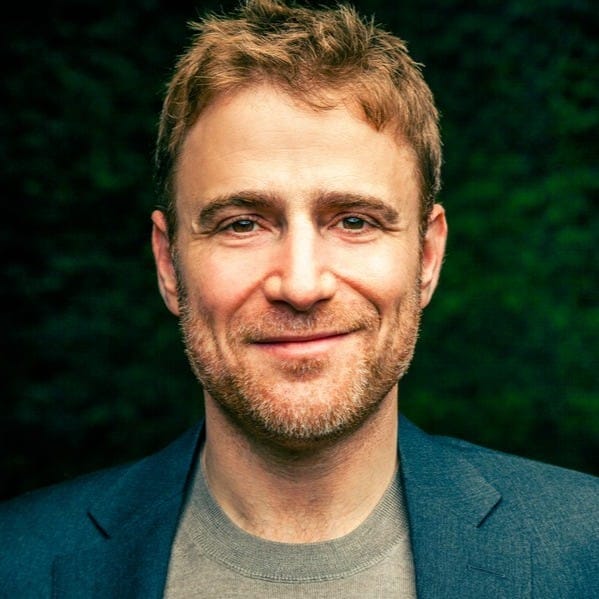
82. A common misconception is that speed is associated with sloppiness, lack of thought and low quality. But speed is not the same thing as running around like a chicken with its head cut off. It’s moving as fast as possible towards the most important thing. Jaleh Rezaei on speeding up your marketing org.
If speed is the yin, the yang is prioritization. You can’t be fast if you don’t know what’s important.
83. One of the biggest mistakes startups make is treating launch like the be-all end-all. It’s like if you just launched, dropped the mic, and said peace out, we’re done. You’re not Bono. Don’t do that. Launching is like the opening move in a chess game. It doesn't mean that much. Caryn Marooney on the best PR advice you’ve never heard.
84. Your customers or patrons make sweeping judgments in their first experience interacting with your creation – especially in the first thirty seconds. The first mile of your customer’s experience using your product cannot be the last mile of your experience building the product. Scott Belsky on shaping remarkable products in the messy middle phase.
85. Delighting the customer always yields better returns than countering or copying a competitor. It’s just a lot harder to do. Andy Rachleff on market leadership.
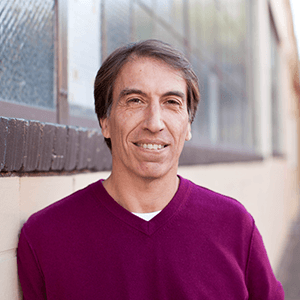
86. I always tell my clients that there is a kindle strategy and a fire strategy. The kindle is whatever helps you grab those first groups of users so you can validate product-market fit. But then the fire is how you actually scale. Too often people confuse the two. Casey Winters on growth tips from Pinterest and Grubhub.
87. You don't need a big group to start a community, and you don't need to have a fully fleshed-out community engagement plan to start hosting events. Just start gathering, learning and iterating and over time your community will organically find its form. David Spinks on virtual events done right.
Growing a community is more like growing a tree than building a house. You don’t need to have blueprints for what it will all look like from day one.
88. Ignore outward measures of success — capital raised, press, social media followers — in favor of a more meaningful signal: customer behavior. If you focus on all those other things, you’re not fueling your company. You’re just gliding on tailwinds supplied by other sources. You’re reliant on energy that you’re not creating. Payal Kadakia Pujji on finding product-market fit for ClassPass.

89. Without a solid product strategy you end up with products that have a Vegas effect — there are so many flashing lights vying for the user’s attention because each team has its own isolated goals. Ravi Mehta on building a product strategy stack.
90. When testing your message or story, make sure it resonates on the inside first. Your employees are often your toughest critics. They will call bullshit on you faster than anyone else. So if your story is not resonating with them, it's probably not going to resonate on the outside. Terra Carmichael on the top startup comms mistakes.
91. Choose the product must-haves first. Start out with: “The product has to do these three things. Nice to have are these next two things. A bonus are these other things.” Otherwise, if you do get backed into a corner and you haven't quite met the must-haves, it can be really tempting to ship anyway. Caitlin Kalinowski on prototyping lessons from Apple and Oculus.
92. “Why would a customer not want this?” is often a far more interesting question than why they would. Rick Song on asking why it won’t work.
Oftentimes the question of why something won’t work uncovers the element that actually does make it work.
93. Your annual plan needs focus — likely more focus than you might feel comfortable with. When you leave the planning process wondering if you put too many resources behind a single bet, that’s the bet that ends up succeeding. Bold ideas need bold resourcing. Lenny Rachitsky and Nels Gilbreth on annual planning advice.
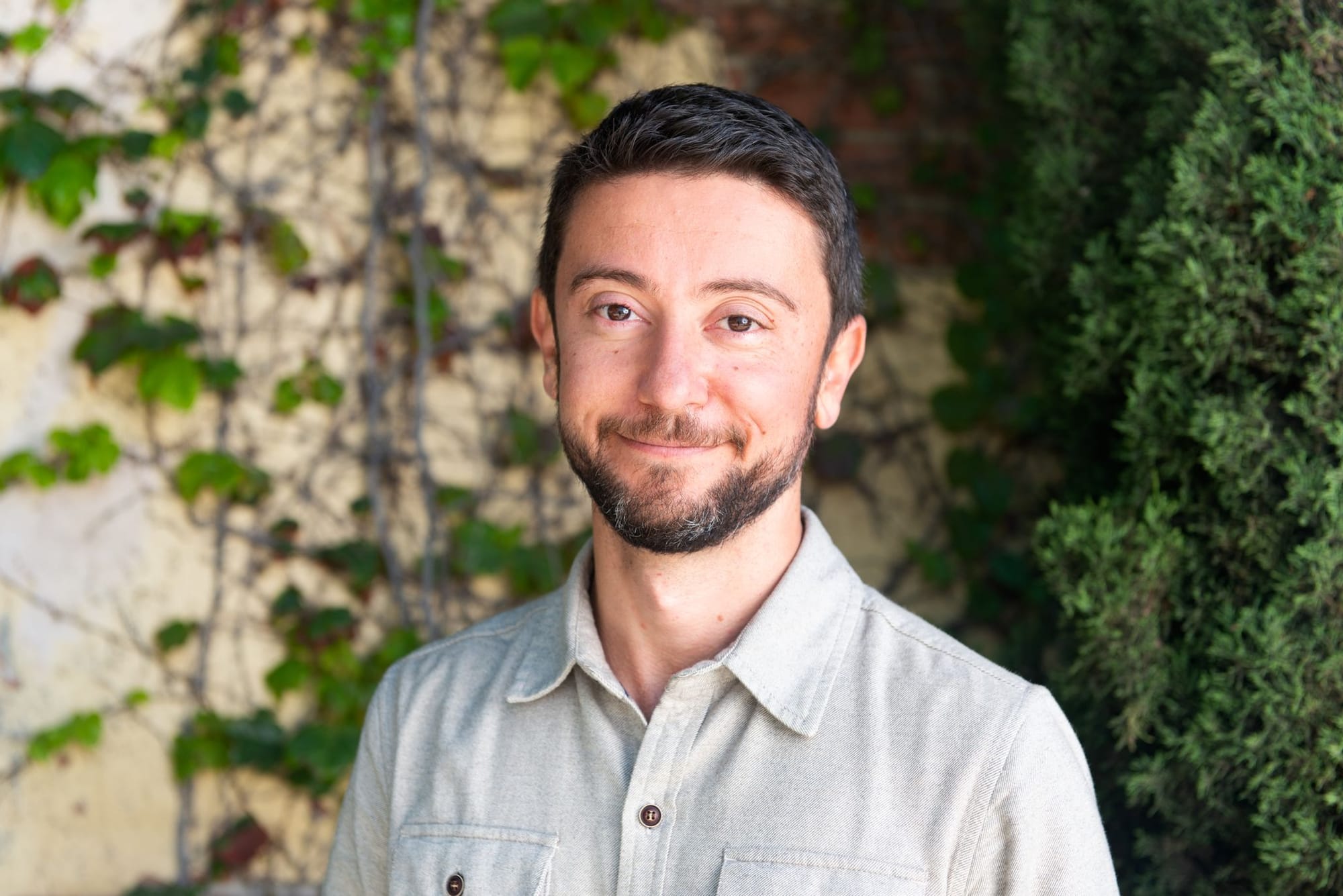
94. Even if you have billions of users, you won’t find any texture in your data if it’s siloed. Call individual people. Start now. Do it often. Software is getting people to think and behave in new ways. A/B testing is monitoring without interacting. Put down the binoculars. Pick up the phone and have a real conversation. Lloyd Tabb on ditching vanity metrics.
95. Staying savvy on good products and trends in the broader ecosystem is super important. But that’s different than focusing on your direct competitors and getting into a myopic state of, “Oh, we’ve gotta build this because they did.” That's counterproductive. Andrew Ofstad on Airtable’s path to product-market fit.
96. You can’t close large deals, tell your brand’s story or improve the product without the voice of the customer. If you don’t have at least a few customers who are willing to go to bat for your product, what programs can you build to start creating those champions? Kalina Bryant on customer advocacy.
97. Feature commits for customers are tech debt for product teams. You limit your flexibility — and what’s more valuable to a startup than the ability to change course quickly? Nate Stewart on how product strategy fails in the real world.
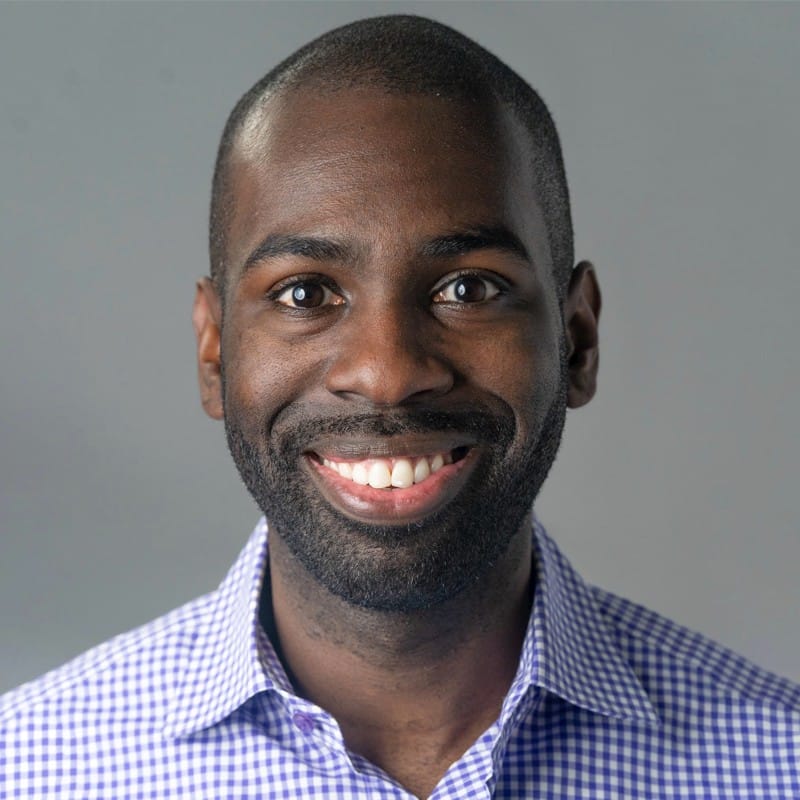
98. Resilient founders don’t ask “Which competitor are we scared of?” Instead, it's “What's the new product that would terrify us the most if it were launched tomorrow? What fully-formed company would be an existential threat to us, whether it exists or not? And if it doesn’t exist, why aren’t we building it?” Bob Moore on founder resilience.
99. It sounds abundantly obvious, but when you’re a designer you’re often knee-deep in a set of features rather than zooming out to why it was purchased to begin with. Too often designers focus on talking to customers that already exist, not prospects or customers that could exist. Hareem Mannan on managing a high-impact design org.
100. Treat customer development as a one-on-one with a direct report — you just want to ask the hard questions. Ryan Glasgow on clearing product hurdles.
